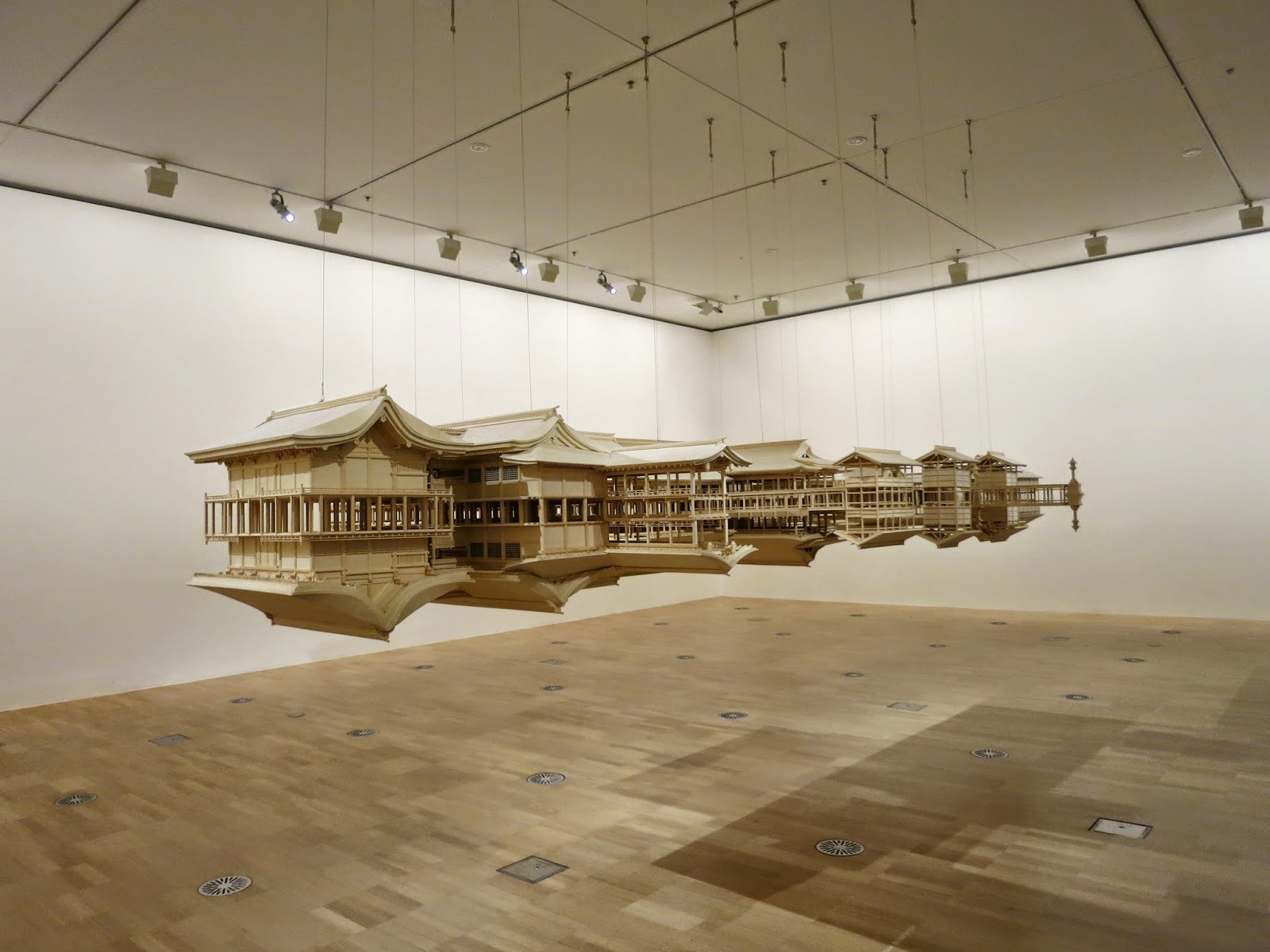On Thursday evening I attended a viewing in the Rio Tinto Gallery, temporary exhibition hall, of the Asian Art Department at the National Gallery of Victoria. The subject of the viewing was a sculpture, newly commissioned by the NGV, created by the Japanese artist Takahiro Iwasaki *. It is called 'Reflection Model (Itsukushima)'. The sculpture is of the Shinto Shrine at the island of Miyajima in Japan's Inland Sea. Wayne Crothers, curator of Asian Art, has written an excellent essay about the work which is on the NGV website * and spoke about the work at the event. The large sculpture floats suspended in the gallery space, revealing the shrine and its own reflection like some etherial object from another dimension.
This first photo shows the whole of the sculpture including the iconic Torii gate through which, in the past, pilgrims approached the shrine by boat. I really love the way the sculpture inhabits the space. Because it is not attached to anything, it is as though it there and not there at the same time, as though it could suddenly disappear leaving a shrine shaped void.
I visited Miyajima Island when I was in Japan in 2011 as the recipient of the Norman and Mary Sparnon Endowment Scholarship. Below are a night time and early morning photo I took of the Torii.
Next, some more general views of the shrine.
The last photo is of the reflection of part of the shrine on that day.
* * * * * * *
This week's ikebana does not involve reflections. However, the space between the two vases and the line of the flower stem defines the relationship of the two elements of the ikebana.
Two blue glass vases with pink, double flowers and leaves, of Oleander * (nerium oleander).
Greetings from Christopher
31st January 2015
* Click on the coloured text for further information.


































